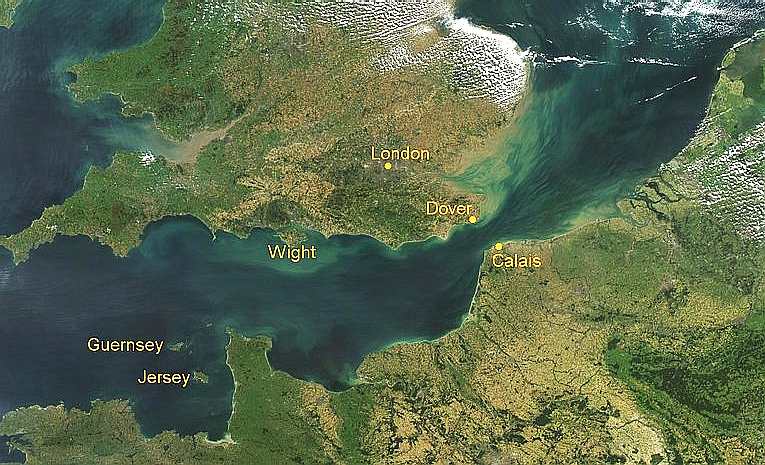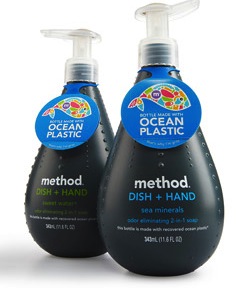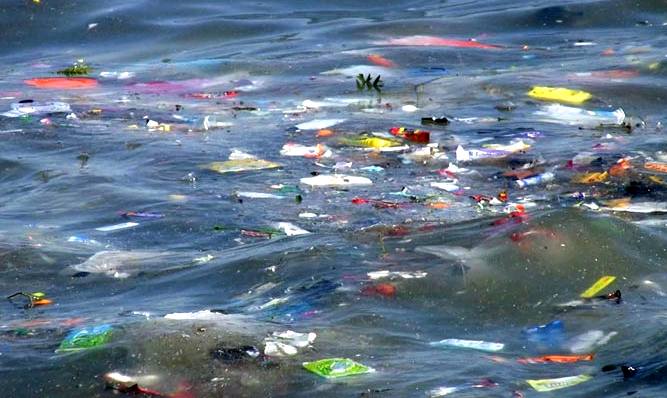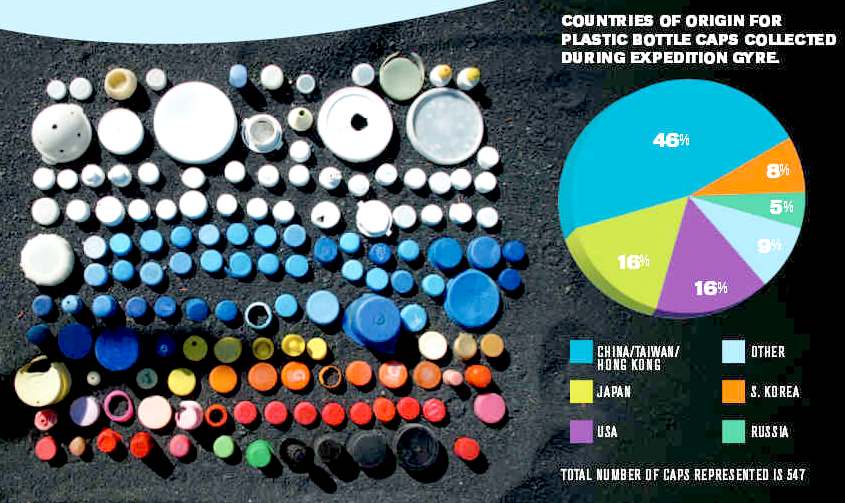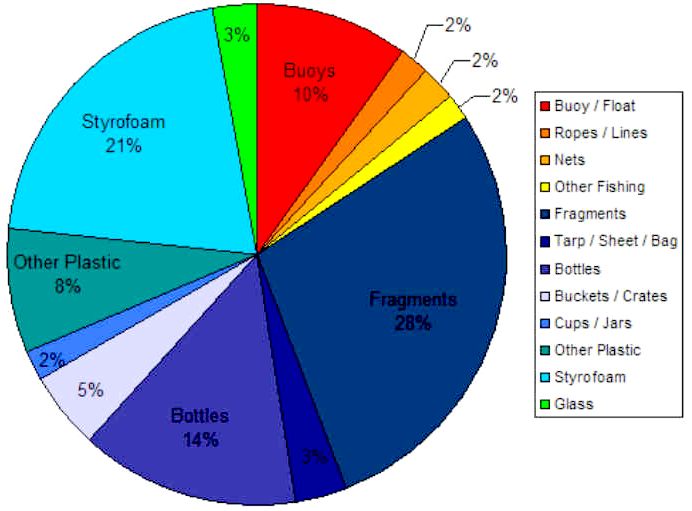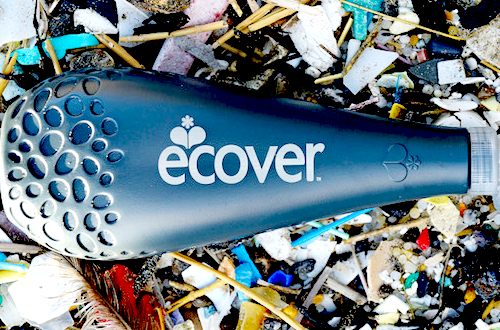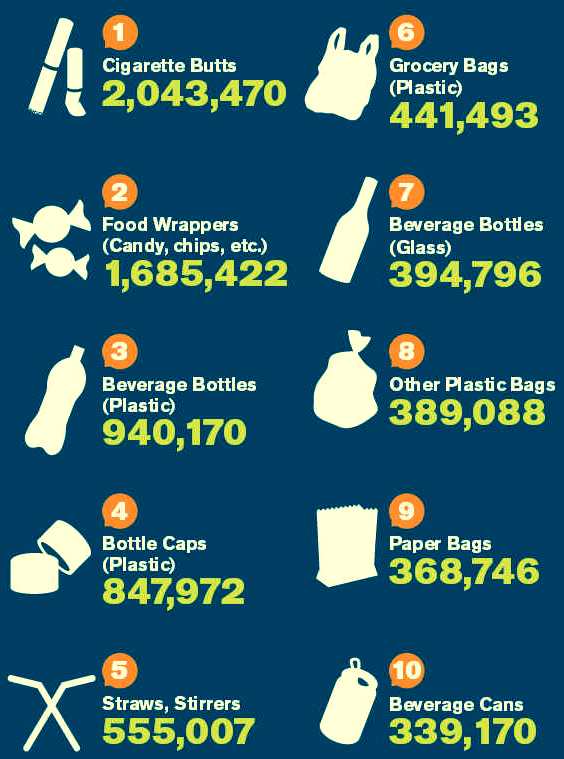|
ENGLISH COASTLINE - CLOSED CYCLE ECONOMY
|
|
|
The most dangerous green lane route in the world is between Dover and Calais. It is also a concentration area, or funnel for ocean waste between England and France. Ocean waste recovery may become a profitable venture is the right technology is in place, coupled with the will of local authorities to work together to provide the incentive for business to recycle towards a closed loop economy.
UK COASTAL WASTE, CLOSING THE LOOP
The UN tell us that there is 270,000 tons of plastic floating about in the world's oceans. In terms of processing machinery, that is not a lot. One small plant could deal with that in two years with ease. the problem is not processing, it is collecting it - where it is spread over such wide expanses of ocean.
Around the UK you will see waste on all our beaches, but apart from capture at strategic rivers, such as the Thames, it is unclear how many tons might be recovered from regular Channel patrols.
There are many factors that have contributed to a rise in marine litter: poor waste management practices in ports and marinas, dumping by ships and vessels, not to mention general public attitudes towards littering are all reasons for this growing problem.
The implications of an increase in marine litter are far reaching - affecting both human health and the ecosystem. This is an issue that is present all around the world, but it is time for England to show leadership in coming to terms with this problem. Below are several examples of international efforts to recycle ocean plastics that we should be learning from.
USA - METHOD and ENVISION PLASTICS
Regardless of the true size of the North Pacific gyre, much of the debris from the patch washes onto the shores of Hawaii. Instead of seeing it as pollution, the folks at Method, a San Francisco-based supplier of nontoxic, biodegradable cleaning products, see the plastic as great source of recyclable materials for its containers, reports Forbes.
But how does one collect the plastic trash from the beaches? By soliciting help from a lot of like-minded environmentalists.
CROWDSOURCED RECYCLING
Method has teamed up with the nonprofit organizations Sustainable Coastlines Hawaii and the Kokua Hawaii Foundation. Workers hand-pick more than a ton of plastic from the polluted beaches. In return, Method donates part of the final products' profits back to the organizations.
Method also works with Envision Plastics, a recycler that uses a process that blends a minimum of 10% of ocean plastic with regular household recycled plastic to create high-quality bottles and containers. The recycler claims that a key ingredient in the process, polyolefin resins (for example, HDPE), does not contain BPA, phthalates, heavy metals, or allergens.
Adam Lowry, Method's "chief greenskeeper," says that the recycling process is not cost-effective, but it was not designed to be, reports The New York Times. "We want to create a conversation about recycling plastics," he says. "The real objective is to make the point that we ought to work with the plastics already on the planet."
Method wants to grow its supply of ocean-drifting plastic. It is training other beach cleanup crews in Southern California and on the East Coast to collect and sort the washed-up plastic. The company pays to have the plastic shipped to its manufacturing facilities in the San Francisco Bay area.
"We've created a crowd source model for collecting plastic," Lowry says. He hopes he can increase the amount of ocean material in the plastic recycling stream by educating other companies that it can be done.
"We're removing the excuse for companies to say they can't use recycled plastic because it's not high-quality enough or too expensive," Lowry says. "That's B.S. - we're doing it with ocean trash."
EU - OCEAN PLASTIC IS A PRIME RESOURCE
Similarly, Europeans also are taking plastic out of the oceans to recycle and are using plastic waste to form products that go back into the water. Plastic Recyclate Impression Moulding Engineering (PRIME), a consortium from European countries, is turning mixed polymer waste into materials that are used in flood-barrier panels and other marine construction projects, reports Resource. The consortium is conducting a life-cycle analysis on the panels to see how they compare to traditional flood-barrier panels made from aluminum.
The flood-barrier panels are composed of 80% to 97% mixed plastic waste. The idea for the panels came from a need in the European recycling industry to dispose of its low-grade plastic waste. "We have seen some very promising results in the manufacture of the panels, and this clearly demonstrates the increasing potential of using mixed polymer waste to create high-end products that can be used in many industries," says Steve Morgan, technical manager at Recoup, a national charity that promotes plastic recycling, and PRIME's dissemination and commercial exploitation manager.
The flood barrier program is just one of PRIME's projects to increase plastic recycling. Like Method, plastic manufacturer Closed Loop Recycling and sustainable cleaning products brand Ecover are creating packaging materials from waste ocean plastic. In another effort, nylon polymer manufacturer Aquafil, sock company Star Sock, and the European Centre for Nature Conservation are recycling abandoned fishing nets into garments and fabrics.
Plastic bottle caps collected during an expedition in Alaska, showing the majority recovered were identified as coming from China/Taiwan.Hong Kong at 46%. The next biggest culprits were Japan and the US at 16% each.
OCEAN PLASTIC COMPOSITION
Physical properties of plastic samples collected by SEA in the Atlantic Ocean indicate the collected material is made of HDPE (high density polyethylene), LDPE (low density polyethylene), and PP (polypropylene), which are used to make common household items such as milk jugs, plastic bags, and drinking straws. These materials have a density less than that of seawater, causing them to float on the sea surface.
It seems then that it would pay to concentrate a proportion of any robot fleet as shore/river patrols, with the objective to capture PET, PVC and PS, before it is broken down and sinks. This might be in tandem with gyre operations to capture the smaller particles.
A pie chart of waste sampled from the North Pacific gyre. Surprisingly, Styrofoam amounted to 21% of the catch, but is not mentioned much in reports. Plastic fragments were by far the biggest element at 28%. This tells us that even with dedicated gyre expeditions, a two stage treatment and filtration system is essential.
COMMON
PLASTICS ACRONYM & FULL NAME
TOXICITY
Plastic debris can threaten marine organisms through entanglement, especially by large debris such as derelict fishing gear, and by ingestion in organisms ranging in size from zooplankton to fish and larger animals such as sea turtles and seabirds. Additionally, plastics create a habitat for microorganisms and other species and can transport potentially invasive species to new regions of the ocean. Plastics are known to carry organic toxins such as PCBs, PBDEs, and PAHs, and may be responsible for the transfer these and other chemicals to marine organisms.
Plastic debris affects at least 267 species worldwide, including 86% of all sea turtle species, 44% of all seabird species, and 43% of all marine mammal species. [9] Some wildlife harmed by plastic is threatened, or an endangered species under California or US federal law.
We would have thought that the toxicity and drive for cleaner oceans, would have been sufficient impetus for the Environment Agency to want to talk to us.
FROM FIVE TO SEVEN GYRES
You've heard of the Great Pacific Garbage Patch, a
floating plastic soup about 1,000 miles off the coast of California. But
did you know that the five ocean garbage patches, also known as gyres – one for each of the major ocean
basins - are actually six rotational masses. “Each contains so much plastic that if you were to drag a net through these areas you would pull up more plastic than biomass,”
according to Erik Van Sebille, who is a Research Fellow at the Australian Research Council Centre of Excellence for Climate System Science.
ECOVER, BELGIUM
Right now there are about 46,000 pieces of trash floating around in every square mile of the ocean, which is why Belgian company Ecover is now making their cleaning product packaging from plastic fished out of the sea. Taking plastic right out of the ocean, the company then processes it into detergent and dish soap containers. They are calling their new product the Ocean Bottle in an effort to bring attention to the problem of plastic pollution in our precious waterways.
THE VORTEX PROJECT - SEA SHEPHERD, MARCH 2014
Sea Shepherd has launched the Vortex Project, an unprecedented campaign to clean the oceans of plastic debris and transform it into fashion. The project’s first collaboration — launched at NYC’s fashion week with partner Bionic Yarn — is G-Star’s “Raw for the Oceans,” a denim line made of ocean plastic, curated by Pharrell Williams
The above diagram shows the top ten items picked up on polluted shores.
REFERENCE
6 C.J. Moore et al., (2001) “A Comparison of Plastic and Plankton in the Pacific Central Gyre,” Marine Pollution Bulletin 42: 2 97 - 1300.
ACIDIFICATION - ADRIATIC - ARCTIC - ATLANTIC - BALTIC - BAY BENGAL - BERING - CARIBBEAN - CORAL - EAST CHINA ENGLISH CH - GOC - GULF GUINEA - GULF MEXICO - INDIAN - IOC - IRC - MEDITERRANEAN - NORTH SEA - PACIFIC - PERSIAN GULF - SEA JAPAN STH CHINA - PLASTIC - PLANKTON - PLASTIC OCEANS - SEA LEVEL RISE - UNCLOS - UNEP - WOC - WWF
AMAZON - BURIGANGA - CITARUM - CONGO - CUYAHOGA - GANGES - IRTYSH - JORDAN - LENA - MANTANZA-RIACHUELO MARILAO
- MEKONG - MISSISSIPPI - NIGER - NILE - PARANA - PASIG - SARNO - THAMES -
YANGTZE - YAMUNA - YELLOW
LINKS & REFERENCE
Algalita marine research foundation http://www.marinedebrissolutions.org http://marinedebris.noaa.gov/ http://www.algalita.org/ NOAA
Marine Debris Program How
a Company Recycles Ocean Plastic Twice the Size of Texas Forbes, 3/14/13 UK Government packaging producer responsibilities https://www.gov.uk/packaging-producer-responsibilities http://www.closedlooprecycling.co.uk/news/closed-loop-recycling-ecover-join-up-to-support-marine-plastic-initiative http://inhabitat.com/eco-cleaning-company-ecover-is-making-bottles-out-of-recycled-ocean-plastic/ https://www.polymersolutions.com/psi-newsletter-archive/june-2013/ http://www.channelswimmingassociation.com/ http://en.wikipedia.org/wiki/English_Channel University-study-highlights-importance-of-cross-english-channel-collaboration http://www.dimdex.com/en/warship-display.aspx http://www.maritimeaustralia.com.au/ http://www.pacific2013.com.au/innovation-awards/index.html
|
|
|
This website is Copyright © 2015 Bluebird Marine Systems Limited. The names Bluebird™, Bluefish™, Miss Ocean™, SeaNet™, SeaVax™ and the blue bird and fish n flight logo are trademarks. All other trademarks are hereby acknowledged.
|
